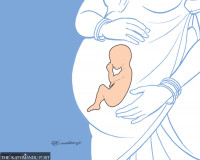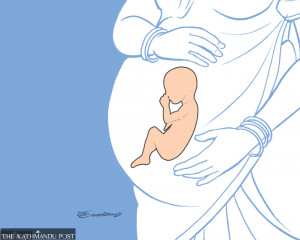Health
Road disruptions raise risk of more home deliveries in districts
Experts call for urgent measures to protect mothers and newborns. Officials say they have started risk mapping.
Post Report
Concerns are growing about a possible rise in home deliveries in several districts after road links were disrupted last week’s devastating floods and landslides.
Officials at the Ministry of Health and Population said that they are aware of the growing risk and have instructed agencies concerned to start risk mapping.
“The risk of home deliveries has grown due to last week’s monsoon havoc,” said Dr Bikash Devkota, director general at the Department of Health Services. “We have instructed agencies concerned to monitor the situation and report back. We also held discussions with our development partners about the risks and requested them for help.”
At least 233 people have been confirmed dead, while 22 others are still missing in the floods and landslides triggered by record-breaking precipitation in three days starting Thursday evening last week. As many as 169 people have been injured, and more than 17,120 others were shifted to safety, according to Nepal Police.
Transport links to many districts have been disrupted by the floods and landslides that swept the roads and bridges in many places. Health facilities and birthing centres in many places were also destroyed in the disaster.
Maternal health experts say that the recent disaster could cause a severe setback to maternal and child health and also affect institutional delivery rate.
“Due to the disruption in vehicular movements, many pregnant women may not be able to reach birthing centres,” said Nisha Joshi, a public health official at the Family Welfare Division under the Department of Health Services. “Pregnant women and new mothers who have lost family members or property in the disasters would be unable to reach hospitals or health facilities for childbirth.”
Health officials say that they have cautioned health workers in the affected areas about the heightened risk of an increase in home deliveries, which increases the risk of maternal and newborn deaths.
A report on maternal mortality carried out by the National Statistics Office in 2021 showed that for every 100,000 live births, 151 women still died from maternity-related complications. Similarly, the institutional delivery rate has reached around 80 percent. Maternal death rate and home delivery rate are very high in remote areas.
“We are aware of the risk of a rise in home deliveries, which poses a threat to the health of mothers and their newborn,” said Joshi. “We have requested the United Nations Population Fund and Nepal Red Cross Society to distribute warm clothes to 12 new mothers in the Nakkhu area of Lalitpur, who are taking refuge in makeshift shelters.”
Maternal health experts say expecting mothers may face difficulties in attending regular checkups during pregnancy, which could put both their lives and babies at risk. Along with a potential drop in institutional deliveries, the number of antenatal and postnatal visits could also decline due to the impact of the disaster, according to them.
With the government announcing free institutional delivery service in 2009 at all state-run health facilities, more than 2,800 birthing centres were set up across the country. The institutional delivery rate, which was around 18 percent then, has now increased to an average of around 80 percent across the country.
The health ministry also provides travel allowances for antenatal care visits, offers skilled birth attendant (SBA) training to staff nurses, and hires them at birthing centres to help prevent deaths during or after childbirth.
Nepal had cut the maternal mortality rate from 539 per 100,000 births in 1996 to 239 per 100,000 births in 2016—for which the country even received a Millennium Development Goals award.
In the last fiscal year, at least 190 women from 51 districts died of complications during childbirth, data provided by the health ministry shows.
The actual number of maternal deaths due to birth-related complications could be much higher, as maternal and perinatal death surveillance is being carried out in 51 districts only, officials say.
Nepal’s target under the UN’s Sustainable Development Goals is to reduce the maternal mortality rate to 75 per 100,000 births by 2030.




 6.84°C Kathmandu
6.84°C Kathmandu













